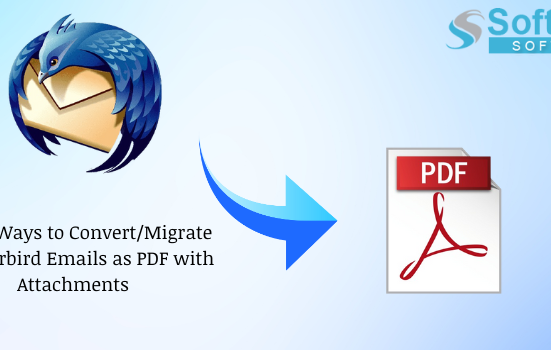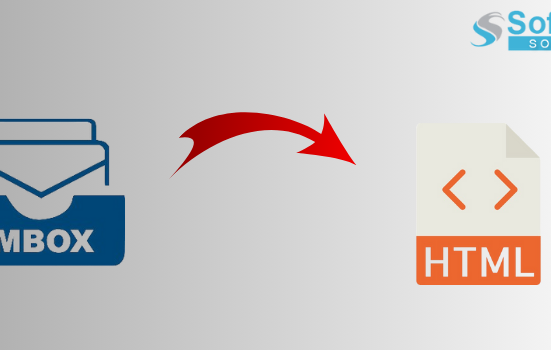Follow our step-by-step instructions to convert an Exchange Server mailbox to PST format. To export your mailbox data effectively, adhere to following guidelines.
Overview
How can I convert a PST-formatted Exchange Server mailbox? Many customers who wish to migrate their mailbox data or make backups find that converting an Exchange Server mailbox to PST format is a necessary process. Email programs like Microsoft Outlook can be used to conveniently access and manage your data by converting your inbox to PST (Personal Storage Table) format. We will provide you a thorough explanation of how to convert an Exchange Server mailbox to PST format in this article.
Methods for exporting exchange mailboxes to PST
For a variety of reasons, it might be necessary to convert an Exchange Server mailbox to PST. Taking a backup of a mailbox prior to deleting the account, experiencing mailbox-related issues, migrating to Outlook 365, or any of the above could be among the causes.
The following below are the methods available for exporting exchange mailboxes to PST The best of the three ways is to export Exchange mailboxes to PST using PowerShell cmdlets since it uses native tools for this purpose. Therefore, the Exchange Management Shell needs to be run from the Exchange Server or another system that has the Exchange Management Tools installed in order to achieve this.
Method 1: EAC (Exchange Admin Center)
The Exchange Admin Center (EAC) offers a graphical interface that is easier to use for mailbox management for users who desire it. Enter your login credentials and proceed to authenticate.
Continue to the “Mail boxes” classification and pick “Recipients”: Access the “Beneficiaries” area in the EAC dashboard and pick “Mailboxes.”
To export, choose the mailbox: To reach the context menu, utilize the “…” (ellipsis) button after selecting the desired mailbox for exporting.
Click the option “Export to a PST file” to continue: Access the menu and select the option “Export to a PST file.” To choose the target directory and export parameters for the PST file, just adhere to the provided instructions.
Track the Export Process: EAC will provide out updates on the status of the export procedure. After finishing, you can get the PST file.
Method 2: Third-Party Tools
There are a number of third-party programs that offer extra functionality and simplify the mailbox-to-PST conversion procedure. These tools can be more appropriate for users with less experience with PowerShell and frequently feature user-friendly interfaces. Take into account aspects like security, compatibility, and user feedback when choosing a third-party product.
Select a Reliable Tool: Do your homework and select a trustworthy third-party tool that satisfies your unique needs. Make that the utility works with the Exchange Server version you’re running.
Install & Configure: Install the chosen tool and set its parameters to suit your requirements. To do this, you might need to select which mailboxes to export and establish a connection to the Exchange server.
Start the Export: Using the tool’s interface, begin the mailbox export procedure. To specify the PST file’s export destination and settings, adhere to the on-screen directions.
Examine and Confirm: After exporting, check the exported PST file to make sure all mailbox contents have been correctly transferred.
Conditions for Exchange Administrator Candidacy
Feel free to validate by entering your login certifications.
See as the “mail boxes” area and afterward click on “Recipients”:Go to the EAC dashboard’s “Beneficiaries” segment and select “mailboxes
- Obtain the required permission
- Establish a shared folder for the export
Permissions granted by the administrator of the Exchange
In order to obtain the required permissions, the Exchange Administrator must bestow the Import/Export role upon the user who will receive the data. This is provided through PowerShell or the Exchange Admin Center (EAC).
To configure permissions using EAC, perform the following
- Access the permissions and Admin roles via the Exchange Admin Center (EAC).
- By clicking the plus sign, a new role can be created.
- Assign the Import/Export role to the user whose privileges will be utilized to export the mailboxes.
- The Exchange Management Shell commands listed below are necessary to designate the role to PowerShell
- User “<Username>” is the assigned New-ManagementRoleAssignment –Role “Mailbox Import Export”
- ImportExport is the name of the New-ManagementRoleAssignment –Role “Mailbox Import Export” –SecurityGroup “Organization Management”
Smart Way to Convert an Exchange Server Mailbox to PST
An alternative method exists for converting the Exchange .edb file to an Outlook PST file. The DataVare Exchange Recovery Application possesses a multitude of functionalities that facilitate the effortless conversion of Exchange Server data to Outlook PST files.
The Quiet Functions of the DataVare Exchange Recovery Application
- To begin with, the software facilitates the recovery of corrupted or damaged data from the live exchange server to an Outlook PST file.
- This application is highly proficient in merging multiple files into a single PST file.
- The application is capable of dividing the sizable file into several segments.
- One significant advantage of the software is that a free trial version is available for installation. The trial version offers restricted functionality for thirty days at no cost.
- The recovered data from the exchange server can be saved in an assortment of file formats, including HTML, MHTML, PST, MBOX, PDF, EML, EMLX, MSG, VCF, and MBOX.
- The application has the ability to transform sizable .edb files. It indicates that there is no file size restriction.
- One notable attribute of the software is its capability to convert both public and private folders from Exchange to Office 365 or PST format.
- The exchange recovery utility is compatible with all versions of Microsoft Outlook and Microsoft Windows. The software is compatible with Microsoft email clients and the kind operating system.
Utilizing cutting-edge technology, the DataVare EDB to PST Converter software features a straightforward graphical user interface. Utilizing this instrument does not necessitate any technical expertise.
Conclusion
You can gain greater flexibility in managing and accessing your mailbox data by converting an Exchange Server mailbox to PST format. The process is basic. This article will walk you through the process of exporting your mailbox data to a PST file, which can then be imported into different email clients or systems. To guarantee a successful mailbox transfer, always create backups of your data and follow best practices.
FAQs
How can my Exchange mailbox be converted to a PST?
Proceed to the Exchange Admin Center after logging into your Microsoft 365 account. After selecting Admin Center, select Security and Compliance. To locate the mailbox, use the Content Search eDiscovery tool. Once it’s located, export it as a PST file.
How can a disconnected mailbox be exported to a PST file?
Make a temporary user account in Active Directory (AD) and link it to the disconnected mailbox in order to export disconnected Exchange mailboxes. Next, export the disconnected mailbox items to PST format by creating a mailbox export request from the Exchange administration shell.
How can I download every email from Outlook to Exchange?
Launch Outlook. To access Account Settings, select File > Account Settings. Double-click your Microsoft Exchange account on the E-mail tab. Drag the Mail to keep offline slider in the Change Account dialog box to the desired amount of months, or to all to synchronize all email messages.








Leave feedback about this